Optimizing your race bike for maximum performance involves making strategic choices about its components and setup. Trifox offers a range of carbon mountain bikes that cater to racers looking for speed, durability, and efficiency.
Firstly, selecting the right frame is crucial. Carbon frames like those offered by Trifox significantly reduce weight while maintaining strength, crucial for competitive racing.
A lighter bike allows for faster acceleration and easier climbing, giving you an edge over competitors.
Wheels also play a vital role in performance. Carbon wheels are not only lighter but also provide better aerodynamics. This can lead to increased speed and reduced effort over long distances. Choosing the right tires based on the terrain is equally important.
For rough terrains, consider wider tires that offer better grip, while narrower tires are suitable for smoother tracks, enhancing speed.
Adjusting your bike fit is another key aspect. Ensuring your saddle height, handlebar position, and pedal alignment are optimized for your body can improve comfort and efficiency, reducing fatigue during long races.
Regular maintenance of components is essential to keep your bike at peak performance. This includes checking the drivetrain for wear, ensuring the brakes are responsive, and keeping the bike clean to prevent the buildup of dirt which can affect operation.
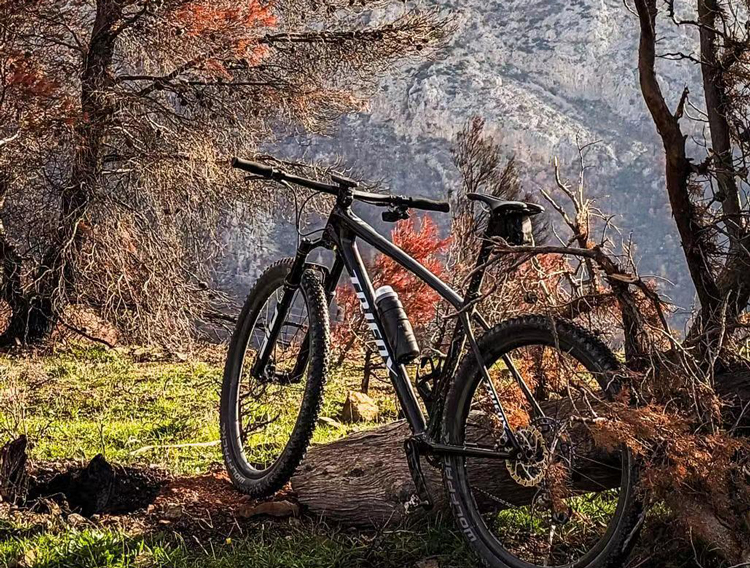
By focusing on these elements—choosing the right materials, adjusting for optimal fit, and maintaining your bike—you can enhance your race bike’s performance, ensuring speed, reliability, and a competitive edge on the track.
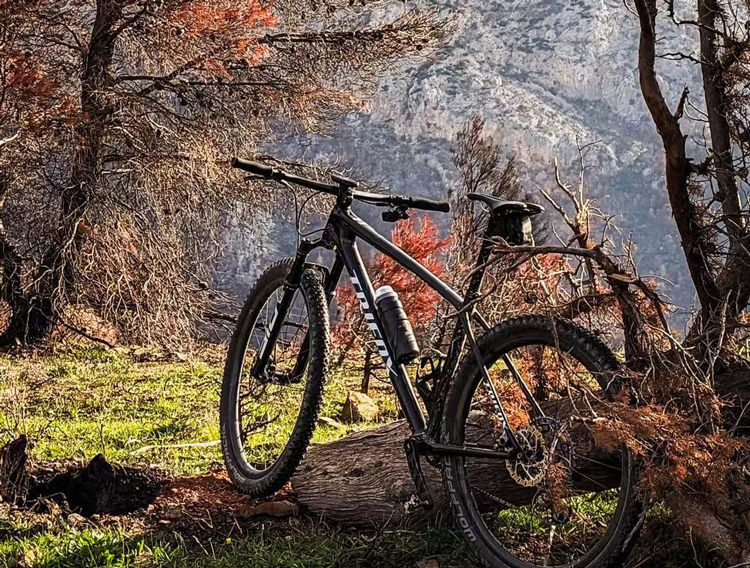
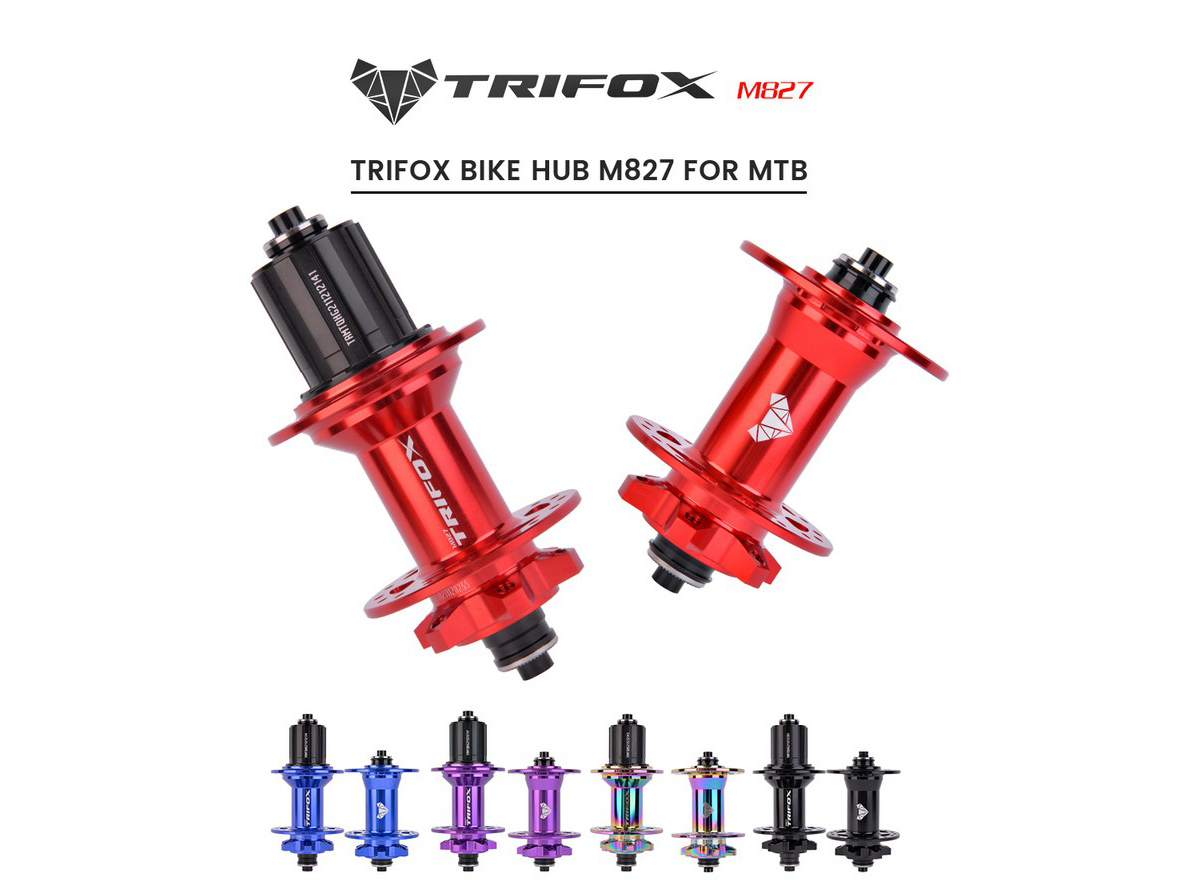
Enhancing your bike's performance can often be as simple as upgrading to straight spokes hubs, a choice that significantly impacts your cycling experience. Trifox's range of bicycle hubs offers the perfect blend of durability and performance, ideal for those looking to replace or upgrade their current setup.
Straight spokes hubs are a popular choice among cyclists for several reasons. Firstly, they provide improved wheel strength. Unlike traditional J-bend spokes, straight spokes experience less stress and are less likely to break under pressure, ensuring more resilience and a longer lifespan for your wheels. This design enhances the overall robustness of the wheel, making it suitable for both road and off-road cycling.
Another advantage is the improved aerodynamics offered by straight spokes hubs. With fewer protruding elements, these hubs reduce air resistance, allowing for smoother and faster rides. This is particularly beneficial for competitive cyclists aiming to shave seconds off their time.
Maintenance is also easier with straight spokes hubs. Their simple design reduces the need for frequent adjustments and repairs, allowing you more time on the road and less in the workshop.
Trifox's hubs, made from durable aluminum, are compatible with most standard bikes, making them a versatile choice for various cycling styles.
Choosing the right hub is crucial for maximizing performance. Consider factors such as the type of cycling you engage in and the compatibility of the hub with your bike.
By selecting the appropriate hub, you can ensure a seamless fit and optimal performance tailored to your specific needs.
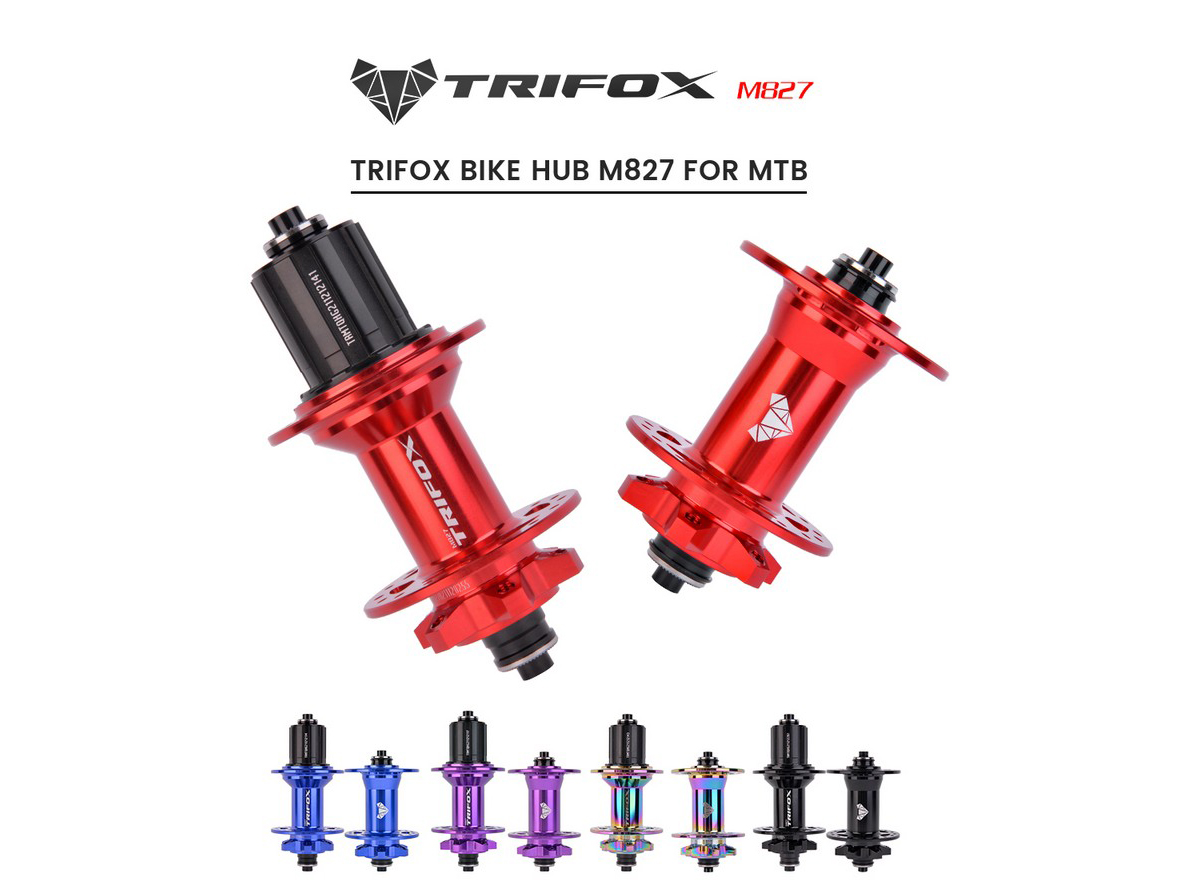
Overall, upgrading to straight spokes hubs is a smart investment in your cycling experience, offering enhanced strength, better aerodynamics, and reduced maintenance, all contributing to a more enjoyable and efficient ride.
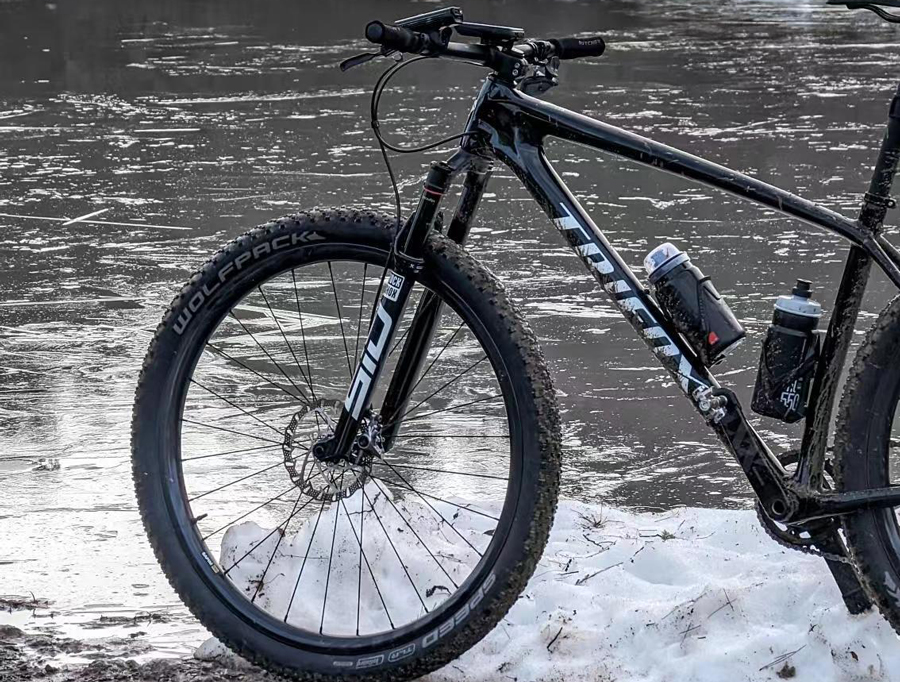
Upgrading to a lightness frame can be a game-changer for cyclists aiming to enhance their performance.
The Ultra Light 29er Carbon Hardtail MTB Frame SDY20 by Trifox is a prime example of how a lightweight frame can elevate your riding experience.
One of the standout features of the SDY20 is its construction using T1000 carbon fiber, renowned for its strength-to-weight ratio. This material ensures the frame is both robust and remarkably light, with weights starting at just 930g. Such a reduction in weight not only boosts speed but also enhances maneuverability, making climbs and sprints more efficient.
The frame’s internal cable routing is another feature that contributes to a superior cycling experience.
This design not only offers a sleek aesthetic but also reduces wind resistance and protects cables from external elements, ensuring consistent performance and easier maintenance.
Additionally, the frame's compatibility with tires up to 29" x 2.4" allows for smoother rides over rough terrains, absorbing shocks and providing better traction. This adaptability means cyclists can tackle a variety of landscapes with confidence.
The SDY20 also features a Boost 148mm rear axle for increased stiffness, which enhances handling and stability, especially during sharp turns or high-speed descents. Whether you’re navigating rocky trails or cruising on smoother paths, this frame’s geometry is optimized for comfort and performance.
Incorporating these advanced features, the SDY20 frame ensures that cyclists not only ride faster but also experience improved control and reduced fatigue, making it an excellent choice for those looking to enhance their cycling performance.
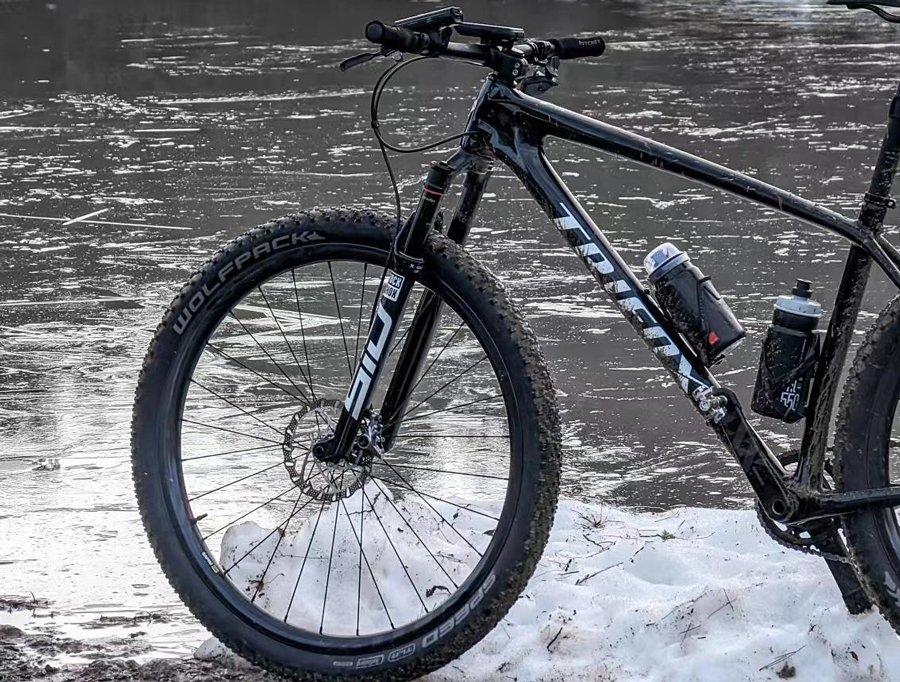
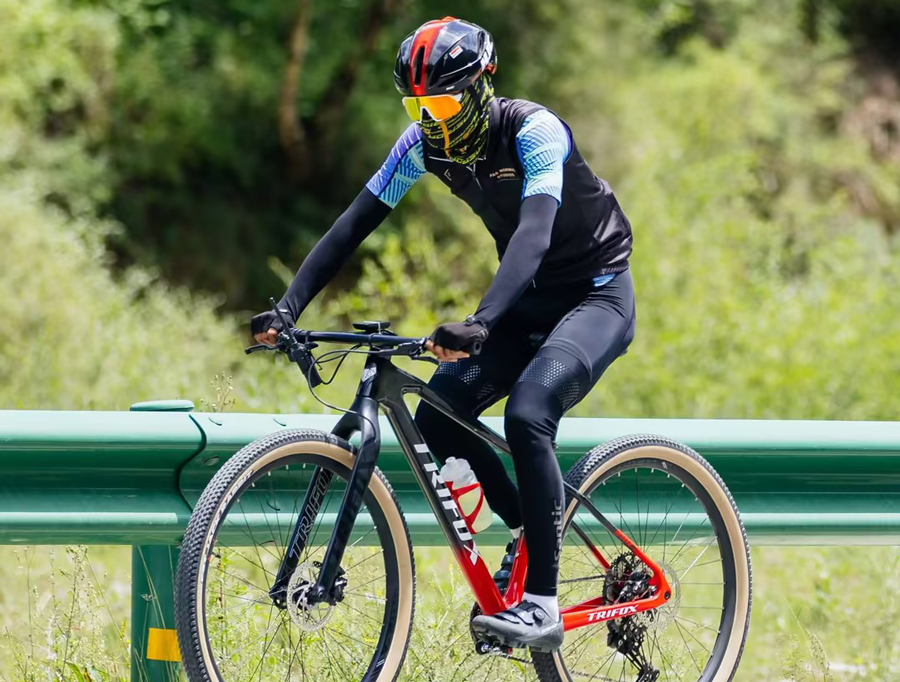
A stylish bike frame does more than just turn heads; it can significantly enhance both the aesthetic and functional aspects of your ride. When you invest in a frame that looks great and performs well, you not only elevate the visual appeal of your bike but also enjoy a superior cycling experience. Here's how a stylish frame can make a difference in both your bike's look and your ride.
First and foremost, the design of a bike frame plays a crucial role in aerodynamics. A well-designed frame reduces air resistance, allowing for smoother and faster rides. The sleek lines and innovative shapes commonly found in stylish frames are not just for show—they are engineered to cut through the wind with minimal drag.
This aerodynamic advantage can translate into improved speed and efficiency, which is particularly beneficial for competitive cyclists or anyone looking to enhance their performance on the road.
Weight is another critical factor where frame design makes a significant impact. Stylish frames, especially those made from carbon fiber, are typically lighter than their traditional counterparts.
Carbon fiber offers a high strength-to-weight ratio, meaning you get a robust frame that doesn't weigh you down. This weight reduction is crucial for climbing hills and accelerating quickly, making every ride more enjoyable and less strenuous.
Handling is also improved with a well-designed frame. A stylish frame often incorporates geometry that enhances stability and control, allowing for more precise maneuvering. Whether you're navigating tight corners or descending at high speeds, the right frame design can provide the confidence and control needed to tackle various terrains with ease.
Trifox Bike's carbon frames perfectly exemplify how style and functionality can coexist. Their frames are not only visually appealing but are also crafted with the latest technology to ensure top-tier performance.
Carbon frames from Trifox are designed to not only catch the eye but also optimize aerodynamics, weight, and handling. This combination of style and substance makes them an excellent choice for cyclists looking to upgrade their rides.
One of the standout features of Trifox's carbon frames is their lightweight construction. These frames are meticulously engineered to reduce weight without sacrificing strength, making them ideal for both long-distance rides and quick sprints. Additionally, the frames' sleek and modern design enhances aerodynamics, helping riders maintain higher speeds with less effort.
Moreover, Trifox frames incorporate advanced carbon layup techniques to improve stiffness and responsiveness. This ensures that every pedal stroke is efficiently transferred into forward motion, providing a dynamic and exhilarating riding experience. The durability of these frames also means that they can withstand the rigors of different cycling environments, from smooth city streets to rugged trails.
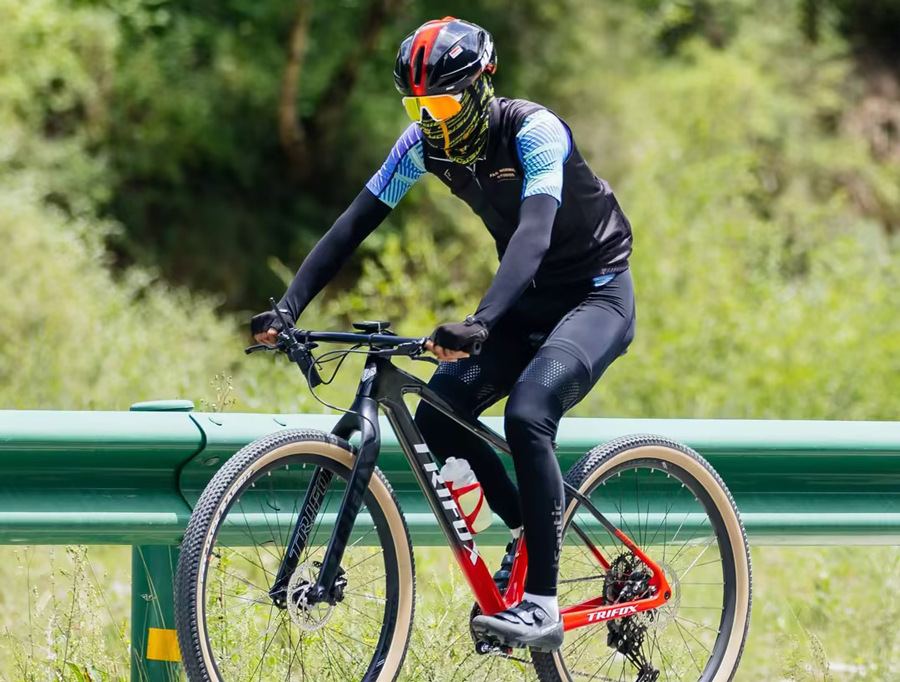
For those interested in combining style with performance, Trifox Bike offers a range of carbon frames that cater to various cycling needs. Whether you're a road cyclist, a mountain biker, or someone who enjoys leisurely rides, Trifox has a stylish frame that can enhance your cycling experience.
Explore Trifox Bike's selection of carbon frames at the official store to find the perfect blend of aesthetics and performance for your bike. Investing in a stylish frame not only improves the look of your bike but also elevates your ride to new levels of enjoyment and efficiency. With the right frame, your bike becomes an extension of your personality and your passion for cycling, ensuring that you ride in style and comfort.
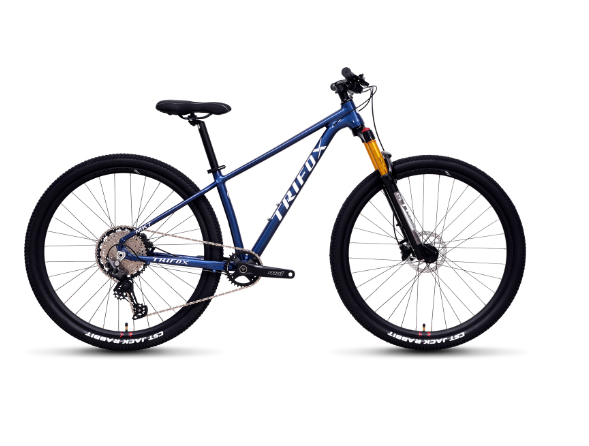
Maximize your trail adventures with an aluminum hardtail mountain bike by embracing its unique benefits and optimizing your riding approach. Aluminum hardtail bikes, like the Trifox PeakTrail Xtreme, offer a blend of durability, lightweight design, and impressive performance, making them perfect for conquering diverse trails.
Benefits of an Aluminum Hardtail Mountain Bike
Durability: Constructed with high-quality aluminum alloys such as AL6061 and AL7075, these bikes are built to withstand rough terrains and extensive use. The PeakTrail Xtreme features a butted aluminum frame with hydroformed top and downtubes, ensuring both strength and lightweight performance.
Lightweight Design: A lighter bike enhances agility and acceleration, crucial for navigating challenging trails. The PeakTrail Xtreme’s frame is 20-30% lighter than standard aluminum frames, making it ideal for speedy ascents and quick maneuvers.
Performance: Equipped with a SHIMANO DEORE M6100 12-speed Groupset, the PeakTrail Xtreme provides a wide gearing range for tackling various inclines and terrains. Its TRIFOX suspension fork, with 120mm travel, efficiently absorbs shocks from rocks and bumps, ensuring a smooth ride.
Tips to Maximize Your Trail Rides
Choose the Right Gear: Opt for gear that suits your trail’s difficulty level. The PeakTrail Xtreme’s 12-speed groupset allows for seamless shifting, ensuring you have the right gear for ascents and descents.
Maintain Your Bike: Regular maintenance is key to performance. Clean your bike after rides, especially in muddy conditions, and inspect it for any damage. Proper lubrication and timely adjustments keep your bike in top shape.
Select Suitable Trails: Pick trails that match your skill level. Start with easier trails and gradually progress to more challenging ones as you build confidence and skill. The PeakTrail Xtreme’s geometry is designed to boost confidence, making it suitable for various trail types.
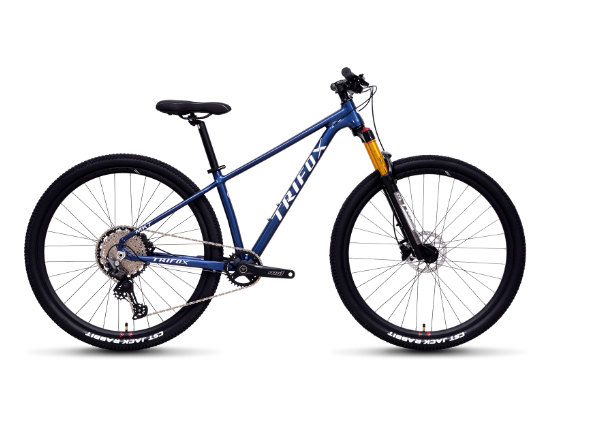
Conclusion
Investing in a high-quality aluminum hardtail mountain bike like the Trifox PeakTrail Xtreme enhances your trail adventures significantly. Its durable, lightweight frame and advanced features like the SHIMANO DEORE M6100 12-speed Groupset and TRIFOX suspension fork offer unmatched performance and versatility.
By choosing the right gear, maintaining your bike, and selecting appropriate trails, you can maximize your trail rides, making each adventure unforgettable. Embrace the thrill of mountain biking with a bike that’s designed for both performance and durability.
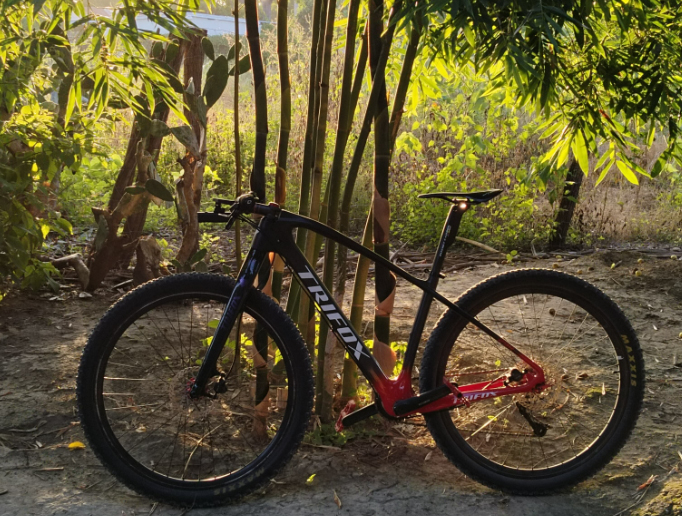
Optimizing your ride with a hardtail mountain bike can significantly enhance your trail experience, making it smoother and more efficient. Here’s how to get the most out of your ride:
Choose the Right Bike: Start with a high-quality bike like the Trifox M2 Hardtail Mountain Bike. Its lightweight carbon frame ensures durability and agility on various terrains.
Proper Fit: Ensuring your bike fits you well is crucial for comfort and performance. Adjust the saddle height so your legs have a slight bend at the bottom of the pedal stroke. The handlebars should allow you to maintain a slight bend in your elbows.
Tire Pressure: Optimize tire pressure based on the terrain. Lower pressure improves traction on rough trails, while higher pressure reduces rolling resistance on smooth paths. Always check the manufacturer’s recommended pressure range.
Suspension Setup: Fine-tune the front suspension to match your riding style and trail conditions. Proper suspension settings can absorb shocks better, providing a smoother ride.
Gear Selection: Use appropriate gearing to maintain a steady cadence. Lower gears help with uphill climbs, while higher gears are better for flat or downhill sections.
Maintain Your Bike: Regular maintenance is key. Clean the drivetrain, check the brake pads, and ensure all bolts are tightened. Lubricate the chain for smooth shifting.
Upgrade Components: Invest in quality components like lightweight wheels, reliable brakes, and comfortable grips to enhance your bike’s performance.
Riding Technique: Improve your riding skills. Keep your weight centered, look ahead to anticipate obstacles, and practice cornering techniques for better control.
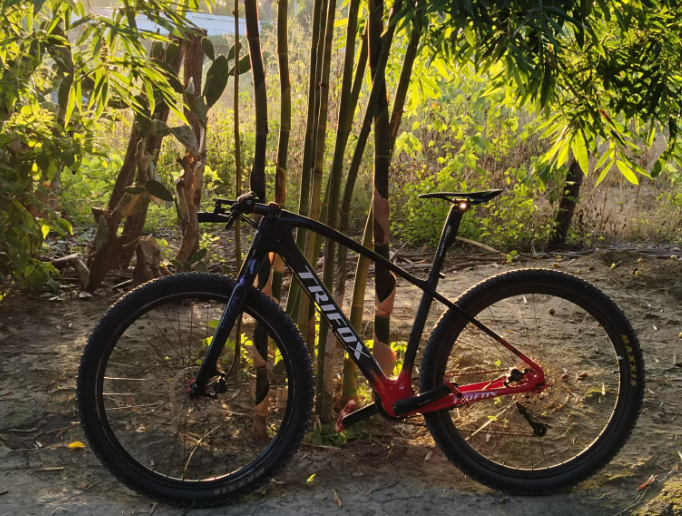
By following these tips and starting with a top-tier bike like the Trifox M2 Hardtail Mountain Bike, you can optimize your ride and enjoy superior performance on the trails.
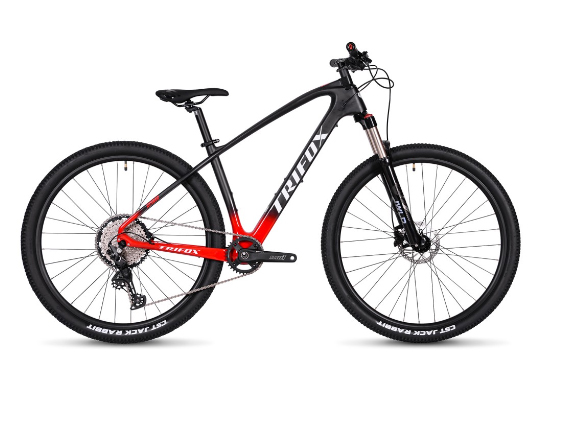
Selecting and maintaining a durable mountain bike (MTB) frame is essential for conquering rugged trails and ensuring your ride's longevity. Here's how to make the best choice and keep your frame in top shape.
1. Choose the Right Material
The material of your MTB frame plays a critical role in its durability. Carbon fiber frames, like the Trifox MFM200, are renowned for their strength and lightweight properties. This advanced carbon material provides excellent shock absorption and resilience against the rigors of off-road riding.
2. Look for Reinforced Areas
Durable MTB frames often feature reinforced areas, such as the bottom bracket and head tube, which endure high stress during rides. The Trifox MFM200 is designed with these reinforcements, ensuring it can withstand intense impacts and rough terrain.
3. Ensure Proper Fit
A well-fitting frame enhances control and reduces fatigue, contributing to the overall durability of your ride. Make sure to choose a frame size that matches your height and riding style for optimal performance.
4. Regular Cleaning
Clean your frame regularly to remove dirt, mud, and debris that can cause wear and corrosion. Use gentle cleaning solutions and avoid high-pressure water, which can damage the frame's finish and internal components.
5. Inspect for Damage
Frequently inspect your frame for cracks, dents, or other signs of damage. Pay special attention to joints and welds. Early detection of issues allows for timely repairs, preventing minor problems from escalating.
6. Apply Protective Coatings
Consider applying a protective coating to your frame to shield it from scratches and UV damage. This adds an extra layer of defense against the elements, prolonging the frame’s life.
7. Proper Storage
Store your bike in a dry, cool place to prevent exposure to moisture and extreme temperatures. Invest in a bike stand or wall mount to keep it off the ground and reduce the risk of accidental damage.
By carefully selecting a durable MTB frame like the Trifox MFM200 and following these maintenance tips, you can ensure a reliable and long-lasting ride, ready to tackle any trail.
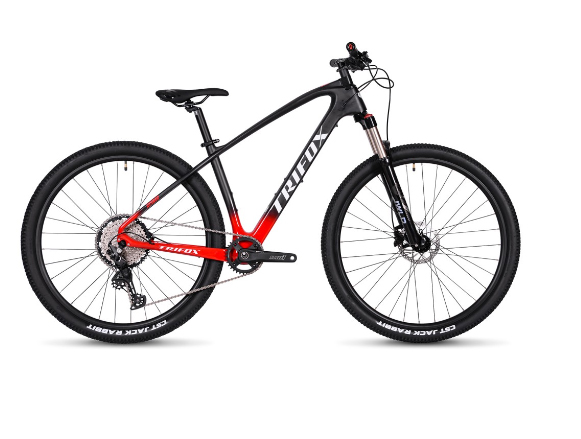
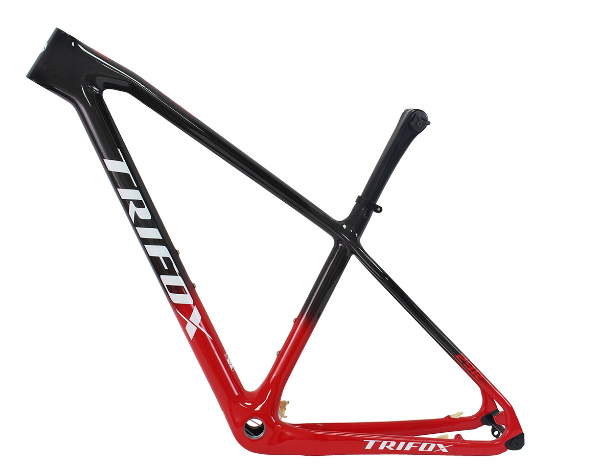
Setting up a full internal cable routing frame can drastically enhance the aesthetics and performance of your bike. By hiding the cables within the frame, you achieve a cleaner look while also reducing drag and preventing cable damage. Here’s a step-by-step guide to setting up a full internal cable routing frame for that sleek, professional appearance.
1. Choose the Right Frame
The first step is selecting a frame designed for internal cable routing. The Trifox SDY21 Carbon MTB Hardtail Frame is an excellent choice. This lightweight, robust frame not only provides the benefits of a carbon build but also features internal routing capabilities that keep your cables protected and out of sight.
2. Gather Necessary Tools and Components
Before you start, ensure you have all the necessary tools and components. You’ll need high-quality cables, housing, a cable cutter, a pick tool, and possibly a magnetic routing kit to help guide the cables through the frame. Having the right tools will make the process smoother and more efficient.
3. Plan Your Cable Paths
Map out the paths each cable will take through your frame. Identify the entry and exit points, and ensure there are no sharp bends that could affect cable performance. The Trifox SDY21 features well-placed entrances and exits to simplify this process, giving you a clear path for routing.
4. Prepare the Frame
Before inserting the cables, make sure the frame is clean and free of any debris. Use a clean cloth to wipe down the inside of the frame tubes if necessary. This prevents any dirt or grime from causing friction or wear on the cables.
5. Insert the Cables
Start with one cable at a time. If you're using a magnetic routing kit, attach the magnet to the end of the cable and guide it through the frame using the magnet on the outside. If not, gently push the cable through, using a pick tool to help navigate through tight spots. Repeat this for each cable, ensuring they follow the planned paths.
6. Secure the Cables
Once the cables are routed through the frame, secure them properly to prevent movement. Use internal cable guides or foam tube sleeves to minimize noise and protect the cables from damage. The Trifox SDY21 frame is designed to accommodate these guides, making it easier to keep everything in place.
7. Connect Components
With the cables routed and secured, connect them to the corresponding components—derailleurs, brakes, and shifters. Test each connection to ensure everything is functioning correctly.
8. Final Adjustments
Make final adjustments to the cable tension and trim any excess housing. Check that all cables move smoothly without any resistance, and make sure the bike operates efficiently.
9. Regular Maintenance
Even with the best setup, periodic maintenance is essential. Inspect the cables regularly for any signs of wear or damage, and replace them as needed to maintain optimal performance.
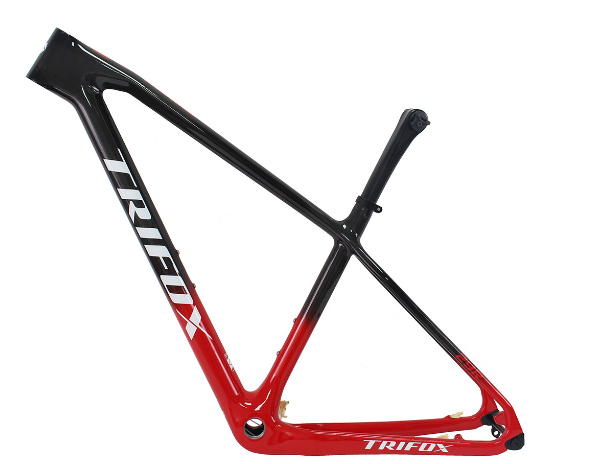
By following these steps, you can achieve a sleek, professional appearance with a full internal cable routing frame. The Trifox SDY21 Carbon MTB Hardtail Frame offers an ideal platform for this setup, combining advanced materials with thoughtful design to enhance both form and function.
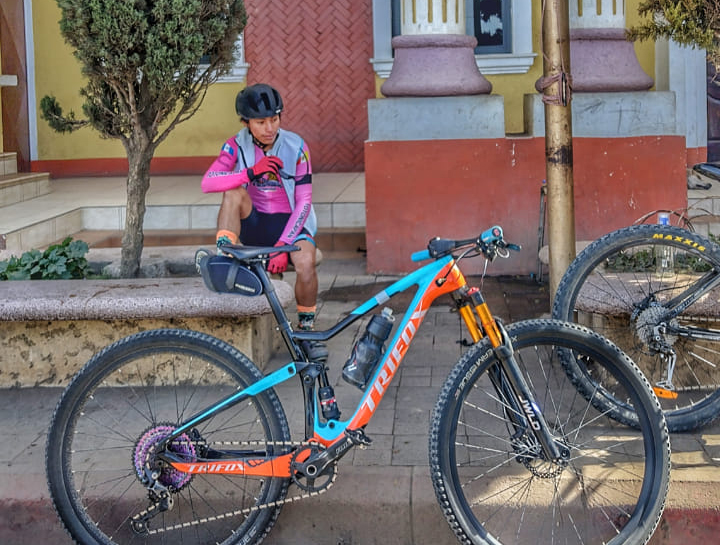
Choosing the right mountain bike frame is crucial for optimizing your riding experience. A top-tier mountain bike frame can significantly enhance performance, comfort, and durability on the trails. Here’s a guide on what features define a high-quality mountain bike frame and how to choose one, using the Trifox MFM100 Full Suspension Carbon MTB Frame as an example.
1. Material
The material of the frame impacts weight, strength, and ride quality. High-end frames are typically made from carbon fiber, known for its excellent strength-to-weight ratio. The Trifox MFM100 uses premium carbon fiber, making it both lightweight and incredibly durable. This allows for better maneuverability and less fatigue on long rides.
2. Suspension Design
A good suspension system is essential for absorbing shocks and providing a smoother ride. The MFM100 features a full suspension design that ensures optimal shock absorption on rough terrains. This enhances traction and control, allowing you to tackle challenging trails with confidence.
3. Geometry
Frame geometry affects how the bike handles and feels. Look for a frame with a balanced geometry that offers stability on descents and agility on climbs. The Trifox MFM100 is designed with modern trail geometry, providing a perfect blend of comfort and performance, making it suitable for various riding styles.
4. Compatibility and Customization
A top-tier frame should be compatible with a wide range of components and allow for customization. Ensure the frame fits your preferred wheel size, fork travel, and drivetrain options. The MFM100 is designed to accommodate diverse setups, giving you the flexibility to customize your bike according to your needs.
5. Durability and Build Quality
Investing in a well-built frame ensures longevity and reliability. The Trifox MFM100 undergoes rigorous testing to meet high standards of durability and build quality. This means you can trust it to perform under demanding conditions and enjoy years of reliable service.
6. Weight
While strength and durability are vital, a lighter frame can enhance performance by making the bike easier to handle and reducing rider fatigue. The MFM100 strikes an excellent balance between weight and durability, offering a lightweight frame without compromising on strength.
How to Choose the Right Frame
Assess Your Riding Style: Determine the type of riding you do most often (e.g., cross-country, trail, enduro) and choose a frame that suits that style.
Fit and Comfort: Ensure the frame size is appropriate for your height and body type. A well-fitting frame improves comfort and control.
Budget: While top-tier frames come with a higher price tag, they offer better performance and longevity. Consider investing in quality now to save on potential future upgrades or repairs.
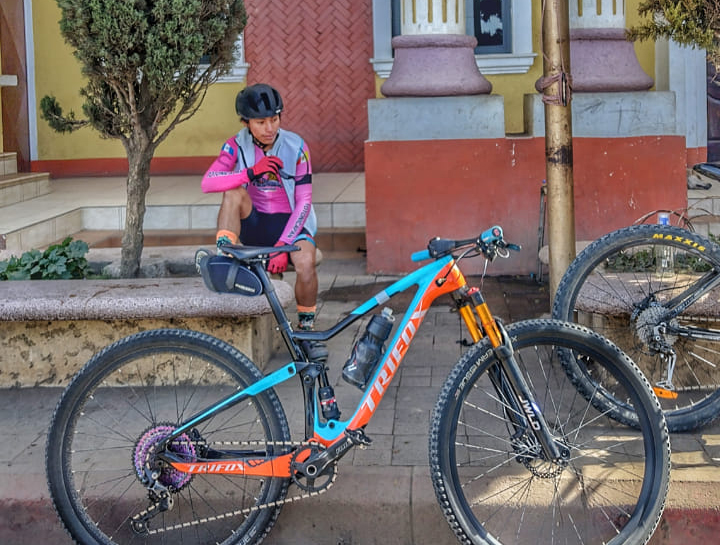
In conclusion, features like material quality, suspension design, geometry, and compatibility define a top-tier mountain bike frame. The Trifox MFM100 Full Suspension Carbon MTB Frame exemplifies these characteristics, making it an excellent choice for serious mountain bikers looking to elevate their ride. Choose wisely, and you'll enjoy a superior riding experience for years to come.

























































